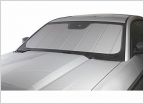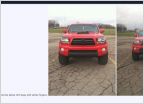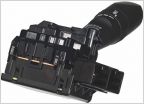-
Welcome to Tacoma World!
You are currently viewing as a guest! To get full-access, you need to register for a FREE account.
As a registered member, you’ll be able to:- Participate in all Tacoma discussion topics
- Communicate privately with other Tacoma owners from around the world
- Post your own photos in our Members Gallery
- Access all special features of the site
Brake Fluid and Testing It
Discussion in '3rd Gen. Tacomas (2016-2023)' started by dr4g1116, Nov 9, 2022.
Page 1 of 2
Page 1 of 2


 Sun Shades
Sun Shades 2021 TRD OR Premium, and the most inconsistent android auto know to God.
2021 TRD OR Premium, and the most inconsistent android auto know to God. Off-road lighting idea, is it feasible?
Off-road lighting idea, is it feasible? Wiper delay switch
Wiper delay switch Dealship quoting $700+ for sparkplug replacement
Dealship quoting $700+ for sparkplug replacement Interior mods
Interior mods











































































